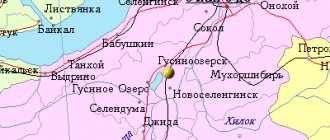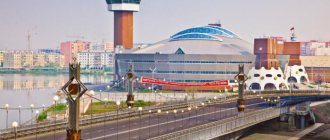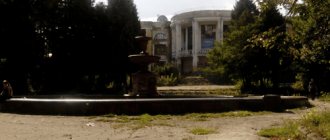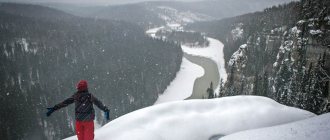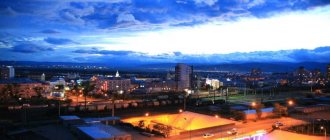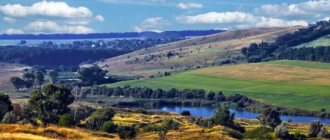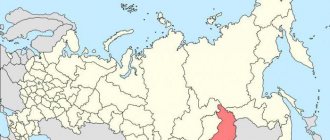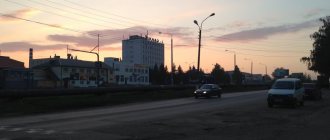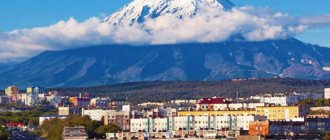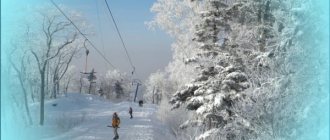Buryatia is a unique region of Eastern Siberia, indicated on car license plates with the numbers 04. Here you can walk the path of Genghis Khan, visit the land of sun and miracles, plunge into the deepest “well” of the planet, see areas of virgin nature or wander around the Russian capital of tea. Travel, get acquainted with ancient healing methods and even try them on yourself - a trip to Buryatia promises all this and more.
Buryatia. A little history
In ancient times, different peoples and tribes lived on the territory of present-day Buryatia. Hunting and fishing were the main activities during the Stone Age. Many ancient monuments, “deer” stones and drawings on rocks remain from the Bronze Age. At different times, the territory of Buryatia was dominated by the Xiongnu, Xianbi, Mongol-speaking Khitans, ancestors of the Tungus, Kurykans and others.
Since the 13th century, Buryatia was part of the Mongolian state. Russians settled the Buryat lands in stages:
- in the 17th century the Cossack pioneers came,
- in the XVIII-XIX - Old Believers,
- in the 19-20s - peasant migrants.
All of them brought brightness and originality to the culture of the region.
Since 1992, it received the status of a Republic, and two years earlier acquired sovereignty.
Language and religion
The population of Buryatia is multinational. Buryats speak Russian, Buryat (state) and Mongolian languages. There are many dialects spoken in different parts of the republic.
In the western part of Buryatia, people profess Orthodoxy, in Transbaikalia they adhere to Buddhism.
What holiday is it today?
January 22, 2022, Saturday
Today are holidays, events: Day of Unification of Ukraine Tomorrow: Premiere of the opera “Eugene Onegin” at the Bolshoi Theater
Today is the Orthodox holiday: Martyr Polyeuctus. St. Philip, Metropolitan of Moscow and All Russia, wonderworker... Tomorrow: St. Gregory, Bishop of Nyssa. Venerable Markian the presbyter. Venerable Dometian, Bishop of Melitino. St. Paul of Komel, wonderworker, student of St. Sergius of Radonezh. Saint Theophan, the Recluse of Vyshensky...
Today is a national holiday: St. Philip's Day... Tomorrow: Gregory - Summer Guide...
Seasons
Seasons, four periods of the year (spring, summer, autumn and winter) characterized by certain average temperatures. The period during which the Sun passes through one of these sectors is called the season. Spring in the Northern Hemisphere and autumn in the Southern Hemisphere begin when the Sun passes through the initial circle of declination and its right ascension is 0° (vernal equinox). Summer in the Northern Hemisphere and winter in the Southern Hemisphere occur when the sun's right ascension is 90° (summer solstice). Autumn in the Northern Hemisphere and spring in the Southern Hemisphere begin when the sun's right ascension is 180° (autumnal equinox). The beginning of winter in the Northern Hemisphere and summer in the Southern Hemisphere is considered to be the winter solstice, when the direct ascension of the Sun is 270°... Next: Seasons. Russian folk calendar. Monthly words...
Cities of the Republic of Buryatia
Ulan-Ude is the capital of the republic, population - 416,079 people. Previously, the city was called Verkhneudinsk. In 1666, the Udinsky fort was built. Situated on the tea route, the city became a major trading center where wholesale fairs were held. The city developed and grew rich. Now Ulan-Ude is a large industrial, commercial, scientific, cultural and tourist center of Eastern Siberia. Mechanical engineering is developed in Ulan-Ude, and the equipment produced here is one of the most advanced. These are An, Mig, Su aircraft, as well as Mi-171Sh helicopters. Ulan-Ude is also an important tourist center, one of the historical cities of Russia since 1990.
Severobaikalsk (25 thousand people) is the second largest city in the republic. Its construction is connected with the Baikal-Amur Mainline. The settlement, founded in 1974, was to become one of its main points. When the construction of the BAM was completed, it turned out that no one needed the highway, and the city began to decline, and its population began to decline at a catastrophic speed.
Gusinoozersk (24 thousand people) is the third largest city in the republic, founded in 1939. The city would be unremarkable if it were not for Goose Lake, after which it is named. Near this lake is the Gusinoozersky datsan, a Buddhist monastery.
Folk calendar about every day
Every day one season always replaces another and this determines a person’s way of life. In connection with this, a folk calendar was formed in which there were practically no nameless, unmarked days. Every day was special, had its own purpose. All this was determined by climate conditions and astrological phenomena.
A calendar is a system for counting periods of time. The first calendars arose a long time ago, in ancient times, because there was a need to measure time. The word calendar comes from the Latin words caleo - to proclaim and calendarium - debt book. This is due to the fact that in Ancient Rome the beginning of each month was especially proclaimed, and because it was customary to pay debts on the first day of the month. Different peoples counted time differently. Some calendars are based on the changing phases of the moon - lunar calendars; in others - the change of seasons - sunny; in others, the length of the year was coordinated with the change of seasons, and the counting of months was associated with the phases of the Moon. Such calendars are called lunisolar.
In Rus', the calendar was called a monthly calendar. Every day, the month book covered the entire year of peasant life, “describing” day by day, month after month, where each day had its own holidays or weekdays, customs and superstitions, traditions and rituals, natural signs and phenomena. The cyclical nature of the calendar is reminiscent of human life, where spring is youth, summer is heyday, autumn is the time of harvesting fruits (it’s good if there are some, otherwise you can live your life without collecting fruits), winter is the time of wisdom and peace. This cyclicality and rhythm determined the way of life of the farmer. The folk calendar was an agricultural calendar, which was reflected in the names of the months, folk signs, rituals and customs. Even the determination of the timing and duration of the seasons is associated with real climatic conditions. Hence the discrepancy between the names of the months in different areas... Next: Folk calendar...
Unique places
There are many special places in Buryatia that help in solving certain problems. For example, many athletes come to pray at Omulevka, a sacred place known as “Bogatyr. Couples desperate to have children come for help to the cave of the Mother’s Womb or to the Face of Yanzhima, a miraculous image of the Goddess of Fertility, which mysteriously appeared on a large boulder located in the Barguzin taiga.
Some unique places are accessible only to men. For example, women are prohibited from visiting the sacred mountain Bayan Tugad and Barkhan-uula. This is the place where, according to Buryat legends, the earthly and divine worlds converge.
Visiting some sacred places is considered a kind of “exam”, a test of the spiritual qualities of pilgrims. So, on Alkhanai there is the Gorge of Sinners.
It is believed that virtuous people pass this place without difficulty, but sinners, who are hampered by the burden of sins, get stuck and have difficulty moving along the gorge. Another similar place is located on a mountain near the Khalyutinsky springs. According to legend, the Tree of Wishes grows on the top of the mountain. But there is no single path leading to it - everyone must find the way on their own. Moreover, the more good deeds a person has done, the easier it is for him to find the treasured tree, and evil and cruel people will not find it at all.
Fishing calendar for every day
The fishing calendar should not be taken as an absolutely indisputable truth. Fish biting is greatly influenced by a whole range of natural factors, as well as the influence on the nature of man himself. You must not forget that the fish’s bite depends and is determined not only by the calendar dates and biological cycles of their life, reflected in the calendar, but also, no less, by the state of their habitat; the bite also depends on weather conditions: air and water temperatures, cloudiness, wind direction and strength, etc... Next: Fishing calendar...
Orthodox calendar about every day
Orthodox calendar: Orthodox, Church and Christian holidays.
The church year is an alternation of weekdays and holidays. On weekdays, a person is called to work “by the sweat of his brow to earn his bread.” Holidays are given in order to feel liberation, to rise above the bustle and routine of the world, to feel involved in the highest of worlds, “where there are no illnesses, sorrows and sighs, but endless life.” Since ancient times, holiday cycles have been associated with the seasons. The pagans associated them with the worship of the forces of nature, the cult of which in the Old Testament was replaced by gratitude to the Creator for the universe. And although the connection between holidays and the seasons has not completely lost its power, since God is present in everything, in the plant and animal world, in human works, it nevertheless faded into the background, giving way to a spiritual foundation built on the Sacred Scriptures. The history of Orthodox holidays dates back to the times of the Old Testament. Each of the Orthodox holidays is dedicated to the remembrance of the most important events in the life of Jesus Christ and the Mother of God, as well as the memory of saints... Next: Orthodox calendar...
Geography
Buryatia is located in the southern part of Eastern Siberia. It neighbors the Republic of Tyva, the Chita and Irkutsk regions, is washed by the waters of Lake Baikal and borders Mongolia.
Ulan-Ude is the capital of the Republic of Buryatia and at the same time the largest city (just over 400 thousand inhabitants). Smaller cities are Severobaikalsk and Gusinoozersk.
Interesting places in Buryatia
Buryatia is one of the most interesting regions of Eastern Siberia. Here you can learn about centuries-old culture, relax, heal, and be alone with pristine nature. There are about 300 natural monuments and many attractions in the republic.
The brightest is Lake Baikal. In Siberia it is called the sea. About 9 thousand rivers carry their waters into this reservoir. Baikal contains most of the fresh water reserves, which is why it got the name well.
Not far from Lake Baikal on the Osinovka River there is a picturesque five-meter-high waterfall. A notable place in Buryatia is the city of Kyakhta. The pearl of the tea route. A couple of centuries ago – the richest city in Russia.
An interesting place is the Baikal Nature Reserve, which is inhabited by a huge number of wild plants and animals.
There are many sacred places of different tribes and peoples in the Barguzin Valley. One of the main ones is Mount Baraghan. Orthodox churches and Buddhist datsans were built on it.
No less exciting are excursions to the Dzherginsky State Nature Reserve, the Tunkinsky Valley, the Transbaikalsky and Tunkinsky National Parks, and the Shumaksky Nature Reserve.
Buryatia is rich in mineral waters, medicinal mud and springs.
Russian folk calendar for every day
The word “sign” comes from the word “notice”, i.e. observe. As a result of observing what happens around a person every day, he accumulates life experience. This knowledge was passed down from generation to generation, carefully preserved and people trusted it as a sacred book. Many signs have come to us from the depths of centuries without losing their knowledge. Each of us is free to choose: to dismiss all this as an absurd superstition or to take a closer look at the signs and take the centuries-old experience of generations more seriously. Most of us, when taking exams, ask them to scold them, boasting about some kind of good fortune or luck, spit so as not to jinx them or knock on wood, take a detour if a black cat crossed the road, are afraid of the number 13 and much more. And who among us does not have lucky things, numbers? Who has never resorted to the help of fate at least once in their life, who has not believed in secrets? It’s as if everything connected with signs is hidden somewhere deep in our subconscious. Often we remember them mechanically, unconsciously, or just as a joke. But, undoubtedly, the signs contain a lot of accurate knowledge and practical wisdom of our ancestors. They cover all the characteristic, often difficult to perceive, natural phenomena. Signs have preserved a lot of what was in old folk holidays and customs; they help predict the weather, grow crops... Next: Folk signs...
Traditions
Buddhist traditions are extremely strong in Buryatia. It is in this region that the largest number of Russian believers professing Buddhism is concentrated. Dozens of Buddhist monasteries – datsans – are scattered throughout the Republic of Buryatia.
Sights of Buryatia
One of the main Buryat attractions is the Ivolginsky datsan. The monastery complex, founded in 1947, includes seven temples, a Buddhist institute, a library, a greenhouse, and a hotel.
Every year, thousands of pilgrims visit the datsan to pray, take part in cleansing rituals or touch the sacred relic - the incorruptible body of Lama Dashi-Dorzho Itigelov. The life and death of this amazing man are full of mysteries and miracles. The Lama died in 1927 while meditating. According to the will, the sarcophagus with his body should have been opened after 75 years. In 2002, the lama's behest was fulfilled. To the greatest surprise, Itigelov’s body did not decay and was perfectly preserved. It is believed that touching the llama's body brings good luck and cures ailments.
No less famous than the Ivolginsky datsan is the Egituisky datsan. It houses a rare relic - a lifetime statue of Buddha, known as Zandan Zhuu.
The Republic of Buryatia amazes with the number of natural attractions. A significant part of the famous Lake Baikal is located on the territory of the republic. The Baikal Nature Reserve was created to protect the unique ecosystem of the lake.
Near Baikal lies the Barguzin Valley - one of the most picturesque and mysterious places in the Republic of Buryatia. Translated from Mongolian, the name of the valley means “rich”.
This area probably owes its name to the extraordinary richness of the local nature. What is there in this picturesque valley:
- vast steppes,
- rivers with an abundance of fish,
- forests full of game,
- clean lakes and mineral springs.
They say that the Barguzin Valley was one of the favorite places of the legendary Genghis Khan, who even in his youth made sacrifices to spirits in these places. By the way, in the area between the Baruun Khandagai and Ugutere rivers there is another natural attraction associated with the name of the great warrior - a huge boulder known as the “Throne of Genghis Khan”. It is believed that the famous khan sat on this stone while performing sacred rituals.
The Tunkinsky National Reserve is famous for its abundance of sources of healing waters. On its territory is the famous Arshan resort, whose mineral waters are used in the treatment of a wide range of diseases.
Holiday calendar, dates and events of the year
All state and professional holidays in Russia, including significant World and International holidays, and other equally interesting holidays and events about every day.
The holiday has always kept pace with the history of mankind. Social time can be divided into three types: everyday life (weekdays), weekends and holidays. Everyday life is a series of practices repeated day after day and every day (work). Weekends are regular breaks from the rush of everyday life. It is believed that on weekends a person should restore his strength after working days. Day off, non-working day. A holiday is a day of celebration established in honor or in memory of someone or something. A day or series of days celebrated by the church in memory of a religious event or saint... Next: Calendar...
Prayer book, Orthodox prayers for every day
Prayer is the most powerful means for healing all illnesses - both physical and mental. Prayers can be laudatory or grateful, petitionary and repentant. If we have offended God, sinned, we must ask Him for forgiveness, that is, repent. Such prayers are called repentant prayers. If everything is fine with us, if we and our loved ones are healthy and prosperous, if we have a place to live, something to wear, something to eat, we must glorify and thank God for this. Such prayers are called praise or thanksgiving. If some misfortune, illness, trouble or need happens, you need to ask God for help. Such prayers are called petitionary... Next: Orthodox prayers...
Zodiac, astrological, eastern calendar. Zodiac signs
In ancient times, to establish the calendar, priests used knowledge of the positions of all the planets. Before the reform of Peter 1, the New Year was celebrated on the Day of the Autumn Equinox. On this day, according to ancient legend, the most peaceful treaty was concluded between the Great Race (ancient Slavs) and the Great Dragon (ancient Chinese) and it was approximately 7518 years ago... For the ancient Slavs, the calendar month corresponded to the lunar cycle from new moon to new moon, taking into account such Thus, the relationship of the entire annual cycle with astronomical and natural phenomena. There was no coherent calendar system. The main natural phenomena are still considered to this day to be the days of the solar equinox and solstice - the Slavic holidays Maslenitsa, Kupala, Ovsen and Kolyada. But during the time of Peter 1, all ancient Slavic calendars were abolished and a new Western European calendar from the Nativity of Christ (Julian calendar) was introduced, while the beginning of the calendar was moved to January 1. The Julian calendar (old style) did not take leap days into account and accumulated one extra day every 128 years. After the October Revolution in 1918, the Gregorian calendar (new style) was introduced in Russia, according to which an amendment of 13 days was introduced. The calendar of the ancient Slavs was based on two planets: the Sun and the Moon. And now they don’t use anything at all. The calendar has become static. There is no such thing as the calendar, it turns out, resting on some planet. Nobody even knows about it. There are just some standard numbers, there are months and holidays. The calendar is based on the Sun and Moon. Why is this so? Because these two luminaries influence the Earth. The Earth revolves around the Sun, and the Moon revolves around the Earth. And these two luminaries create the atmosphere on the planet. From here the calendar is built... Next: Astrological calendar...
Relief features
Buryatia is a mountainous country, but there are also areas of plains. Its landscape is also diverse (mountain ranges alternate with depressions), as is the vegetation of the taiga, steppe and forest-steppe. Due to the mountainous terrain, large and small earthquakes of magnitude 5-6 often occur here.
Climate
Severe winters and hot summers are typical for Buryatia. At the same time, low air temperatures in winter are easily tolerated due to low humidity. There are many sunny days at this time of year. The summer heat is felt only at noon; mornings and evenings are pleasantly cool. Autumn is quite long in Buryatia. The air temperature at this time of year is higher than in the European regions of the country. At the end of March the Siberian spring begins to be felt. But greenery appears only in April.
The Republic of Buryatia is a fabulous land. Here you can find high mountains, eternal glaciers, fast mountain rivers, pearl lakes, endless steppes, and tempting taiga. The nature here is of unprecedented beauty. The deepest and cleanest body of water on the planet is Baikal. Therefore, for every traveler there is a corner that will be the most wonderful for him.
Save it for yourselfPrint
0,5
Author of the publication
offline 13 hours
Dream books online, interpretation of dreams
A dream book is nothing more than an interpreter of dreams and dreams, a translator of dreams. Since ancient times, people have been using dream books; dreams have always been given great importance, and people have often noticed the prophetic properties of some dreams. The dream book can become your faithful assistant every day and throughout your life, thanks to the dream interpreter you can always make the right decisions, the dream book will help you resist temptations in time, and will warn you against wrong steps and frivolous actions. Further…
